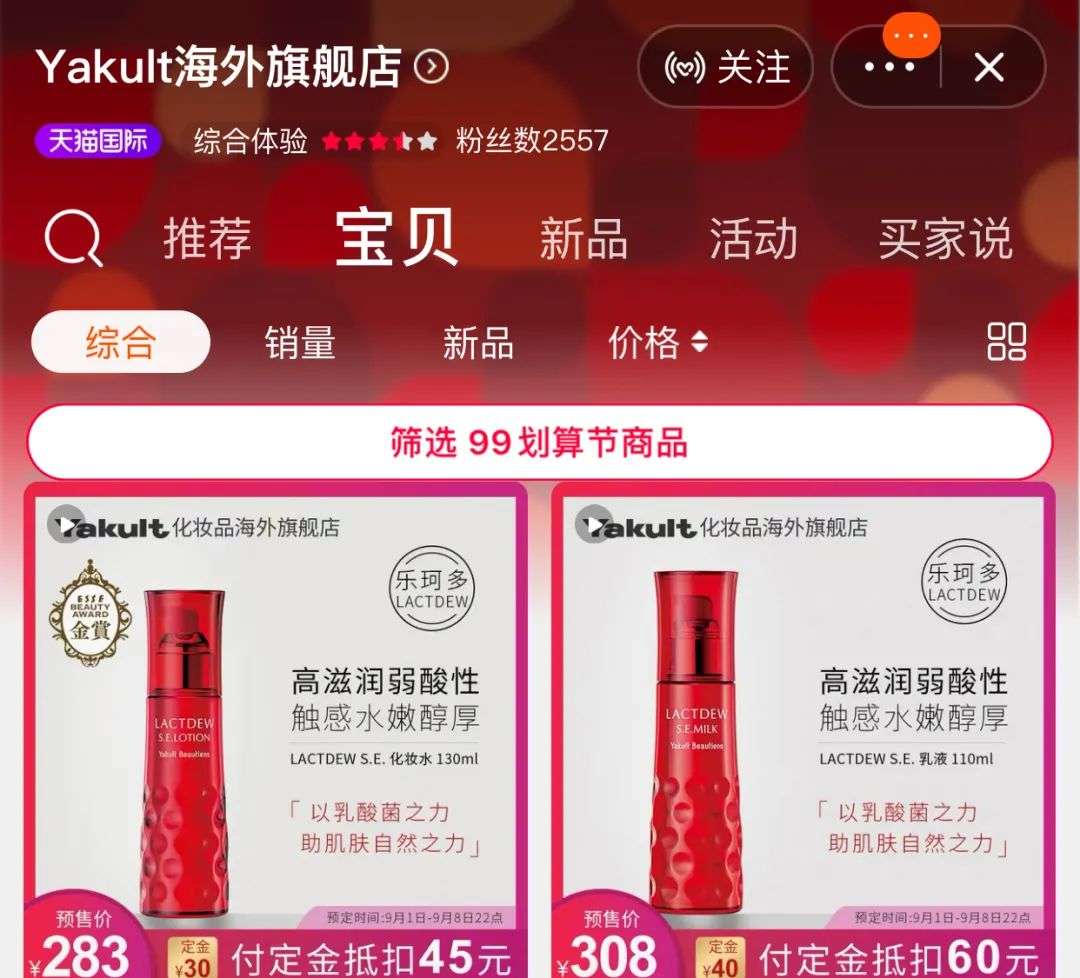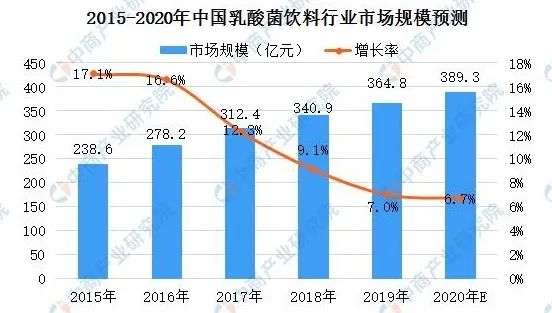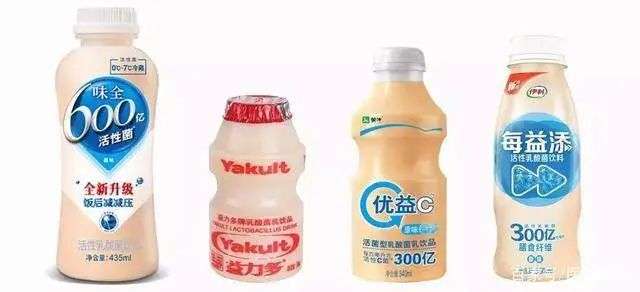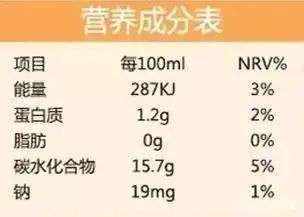Can “tens of billions of active probiotics” really improve intestinal problems?
Editor’s note: This article is from the WeChat public account “Blue Whale Muddy Water” (ID: hunwatermedia), author Kitty.
In recent years, the concept of “probiotics” has become more and more popular, “nourishing the stomach”, “promoting digestion”… various advertising slogans have emerged one after another, and its products have become synonymous with health.
Probiotic beverages have also emerged at the historic moment. Now probiotic beverages mostly contain lactic acid bacteria, so they are also called “lactic acid bacteria beverages.”
Speaking of lactic acid bacteria beverages, one has to mention Yakult, which is known as “10 billion live lactic acid bacteria”. Not only did it create “a single product with an annual sales of 27 billion in 1985”, it also became “a red bottle to break the world.” “The good name.” In 2019, it won over 60% of China’s probiotic beverage market, and its daily sales in China reached 7.6 million bottles.
Recently, Yakult’s strategy in China has been further expanded, and it has set foot in the cosmetics industry and sold cosmetics.
▲Picture source: Sina Weibo
On July 23, the cosmetics brand “Yakult Overseas Flagship Store” under the Japanese Yakult Group officially entered Tmall International. In this regard, industry insiders said that this expansion will undoubtedly expose Yakult’s ambitions in the Chinese market.
However, for Yakult, regardless of the sales performance of cosmetics in China, it is still the company that can win the world by relying on lactic acid bacteria drinks.
While lactic acid bacteria beverages represented by Yakult are highly sought after, they have also attracted dairy giants such as Mengniu, Yili, Junlebao, etc., to start layout and join the industry market competition, and in this competition for lactic acid bacteria beverages , Who can become the most dazzling star in the market?
One, 85-year-old Yakult, sells “lactic acid bacteria” cosmetics?
Yakult was first remembered by people for its unique concept of probiotics and its low-temperature lactic acid bacteria drink in 100ml red bottles.
According to public data, when Yakult entered the Chinese mainland market in 2002, approximatelySales of 60,000 bottles. In 2011, Yakult relied on its single-product strategy to break through 2 billion yuan in sales in one of the few 28 cities with a coverage rate of less than 1% of that of its opponents, and stabilized the low-temperature lactic acid bacteria market. Faucet.
Nowadays, Yakult is no longer just a live-bacteria lactic acid bacteria milk drink, especially in Japan, Yakult has expanded the probiotic field from beverages to food, cosmetics, and pharmaceuticals. Yakult’s cosmetics line has been in operation for nearly 70 years.
The parent company, the Yakult Group of Japan Co., Ltd., was founded in 1935. In 1955, Yakult’s Yoda Research Institute established the Ogori Research Institute of the Department of Cosmetics and Cosmetics, set up factories and began to experiment with the production and sales of cosmetics, and began full-scale sales in 1971 In 2006, the cosmetics business was officially named Yakult Beautiens.
▲Picture source: Yakult Tmall flagship store
It is understood that at present, the products of “Yakult Overseas Flagship Store” are all Yakult Japanese local cosmetics. The brands include Lakult, Revisi, Pario, Ekti, etc. The products cover milk, essence and other categories. The products cover water lotions, essences, creams, masks, cleansers and other categories. The price range is 100-2000 yuan.
In terms of product introduction, Yakult’s cosmetics also highlighted the selling point of “lactic acid bacteria”, and put forward the slogan, which “uses the power of lactic acid bacteria to help the skin’s natural power”, which attracted many people’s attention.
But from the perspective of market awareness, by observing some e-commerce platforms, it is found that there are few sharing and discussions about Yakult cosmetics. Among them, the more active Xiaohongshu platform has only 548 notes to share. People mentioned more in posts, but “Yakult also has cosmetics.”
Although the cosmetics business is not as satisfactory, Yakult lactic acid bacteria beverages are still in the forefront of the Chinese market.
According to relevant data, in 2019, Yakult’s domestic sales in Japan reached 259.1 billion yen (approximately 16.9 billion yuan), and it won over 60% of the probiotic beverage market in China. Sales reached 7.6 million bottles.
The industry believes that as the second largest market after Japan, Yakult has greater ambitions for the Chinese market. Although Yakult’s low-temperature lactic acid bacteria beverage has achieved the60% of the share, but with the entry of large dairy companies such as Yili, Mengniu, and Junlebao, Yakult’s market share is at risk of being divided.
In this context, Yakult has taken another approach to introduce cosmetics, but its cosmetic brand recognition is low. It is difficult for Yakult to expand its presence in China through cosmetics.
Competition in the lactic acid bacteria beverage market is becoming increasingly fierce. The logic of industry race competition is that if one opponent is defeated, a new opponent will appear. Yakult has existed in the lactic acid bacteria beverage market for 85 years. How does it compete with the old brands?
Second, China’s lactic acid bacteria beverage market is tens of billions, and industry giants compete!
Now, the era of lactic acid bacteria drinks has begun. At present, the consumption of dairy products in the Chinese people has become increasingly mature. Lactic acid bacteria beverages are no longer just simple snack drinks, but have begun to play a role in helping intestinal health.
It is understood that the lactic acid bacteria beverage market is divided into two categories: normal temperature lactic acid bacteria beverages and low temperature lactic acid bacteria beverages.
What is the current situation of the lactic acid bacteria beverage market? What is the future development potential of lactic acid bacteria beverages? Through relevant data collection and market data analysis, we have drawn the following main conclusions:
Market size
In recent years, China’s lactic acid bacteria beverage market has maintained a relatively rapid development. From 2015 to 2019, lactic acid bacteria beverages maintained an average compound growth rate of 11.2%. By 2019, the market size was approximately 36.48 billion yuan. The lactic acid bacteria beverage market will maintain a sustained and stable development in the future, and it is expected to reach a scale of 38.93 billion yuan in 2020.
▲Data source: EuromonitorInternational, China Commercial Industry Research Institute
Among them, the room temperature lactic acid bacteria beverage market has grown faster than the overall growth rate of the lactic acid bacteria beverage market; in 2015, the room temperature lactic acid bacteria beverage market in Mainland China was only 7.72 billion yuan, and it will reach 14.88 billion in 2019. It is expected that by 2020, room temperature The lactic acid bacteria beverage market is expected to continue to increase to 16.06 billion yuan.
It can be seen that the market size of normal temperature lactic acid bacteria beverages will always be larger than that of low temperature lactic acid bacteria beverages.
Look at its root cause,Room temperature lactic acid bacteria beverages get rid of the cold chain restrictions. Its key markets are in lower-tier cities and towns, which contribute 85% of sales, while the key market for low-temperature lactic acid bacteria beverages is sales in upper-tier cities and first- and second-tier cities. Accounted for 51%.
Sales Channel
Because of the different key markets, the sales channels of these two types of products are also quite different. The sales share of normal temperature lactic acid bacteria beverages in traditional channels exceeds 60%, while the sales share of low-temperature lactic acid bacteria beverages in modern channels exceeds 90%.
However, whether it is a normal temperature lactic acid bacteria beverage or a low temperature lactic acid bacteria beverage, the sales share of the convenience store channel has increased relatively fast in recent years.
Brand Competition
From the current market positioning of various brands, normal temperature lactic acid bacteria beverages are basically positioned in the mid-range market. The market positioning of low-temperature lactic acid bacteria beverages varies among brands, including medium and high-end products.
But overall, the demands of the brands of room temperature lactic acid bacteria beverages are quite consistent, that is, “72 hours of fermentation, 0 fat”.
Currently, there are more than 100 brands in the room temperature lactic acid bacteria beverage market, and the competition is getting stronger and stronger. Facing the multi-flavored, serialized, and fully blooming Chinese-style market logic, Yakult’s explosive strategy has enabled it to gain market share. Has an absolute advantage.
▲Picture comes from the Internet
In the market for lactic acid bacteria drinks, Mengniu and Yili are Yakult’s local competitors in China. In 2011, Mengniu launched the low-temperature lactic acid bacteria beverage “Youyi C”, followed by Yili with “Each Yitian”. There is Jun Lebao’s “Jun Chang”… the participation of Mengniu, Yili and Jun Lebao has stirred up the neglected market of lactic acid bacteria drinks.
Since 2014, companies such as Wahaha, Melody, and Haocaitou have come up with 100 ml of normal temperature lactic acid bacteria products to participate in this battle for the lactic acid bacteria beverage market. From 2014 to 2015, first- and second-tier brands including Hei Niu, Crayon Shin-Chan, Hua Hua Niu, Miao Mian, and South Korea, as well as foreign brands, have been sharing the room temperature lactic acid bacteria market.
Whether it is a normal temperature lactic acid bacteria drink or a low temperature lactic acid bacteria drink, their products are still in the growth stage, The market has not yet moved towards a monopoly, which means that all brands have penetration opportunities.
Product Innovation
With the improvement of people’s living standards, the proportion of people who need to restrict sugar intake such as diabetes, hyperlipidemia, and high blood pressure is increasing. In order to meet the needs of this group of people for probiotics, Yakult has launched a new product-Yakult Low Sugar in the Chinese mainland market since January 2016.
At the same time, the rapidly growing post-85s and post-90s consumers are gradually becoming the mainstream of beverage consumption. Only the post-90s and post-00s have accounted for about 50% of all beverage consumption, and this part of consumers In addition to paying attention to product features, more personalized needs have become a highlight that attracts them.
The selling point of Yili’s “Every Yitian” product is the addition of L.casei431 strain imported from Denmark, and the amount of live bacteria per 100 ml has risen from 30 billion to 60 billion. The selling point of Mengniu’s “Youyi C” product is the addition of LC-37 strains imported from Denmark, which contains 50 billion live bacteria per 100 ml. The selling point of Guangming’s “100 billion daily” products is the addition of Lactobacillus plantarum. Each 250mL milk drink contains 100 billion Lactobacillus plantarum ST-Ⅲ live bacteria…The main innovation directions of each brand focus on health, flavor and scene. And convenience.
Industry experts believe that the reason for the rapid growth of lactic acid bacteria beverages is that the current consumer demand for beverages is changing. More and more consumers are no longer pursuing the basic functions of quenching thirst and good drinking, but turning to health And nutritional functional requirements.
3. Lactobacillus beverages are “deified”, do they regulate the gastrointestinal tract or deceive themselves?
In recent years, as people’s health awareness has increased, there are more and more lactic acid bacteria drinks on the market that advertise their health benefits. In many people’s eyes, drinking lactic acid bacteria drinks often helps to balance the intestinal flora and can help to a certain extent. Improve constipation, indigestion and other problems.
The various “sugar-free” and “zero fat” lactic acid bacteria drinks on the market are also sought after by many people, and some even use lactic acid bacteria drinks instead of dairy products.
At the same time, there is also a voice that lactic acid bacteria beverages are high in sugar and low in nutritional value. If they are consumed for a long time, they actually increase the risk of obesity and other diseases.
Are lactic acid bacteria drinks the same as dairy products? Is it because it contains lactic acid bacteria and probiotics that are more beneficial to health?
From the perspective of beverage composition and production process, lactic acid bacteria beverages are generally added with water, sugar and food additives to form different flavors in the dairy industry after lactic acid bacteria fermentation. The general lactic acid bacteria beverage adopts the cold chain process to ensure the activity of the bacteria, so the produced lactic acid bacteria beverage usually needs to be refrigerated.
From the perspective of sugar content, people who love lactic acid bacteria drinks always regard it as “sugar-free”, “”0 fat” is on the lips. However, in the nutritional composition table we have seen, 100ml of common lactic acid bacteria beverage contains about 15 grams of sugar, which is much higher than that of cola (10g/100ml).
▲Picture source: Yakult Lactobacillus beverage nutritional composition table
In addition, from a nutritional point of view, the protein and calcium content in lactic acid bacteria drinks is also relatively low, usually only one-third of milk and yogurt. Taking Yakult as an example, according to the ingredient list, the protein content is only 1.2g/100g.
Compared with lactic acid bacteria beverages, yogurt also contains probiotic bacteria. Although the number is usually a little less than that of lactic acid bacteria beverages, the overall nutritional value is higher than that of lactic acid bacteria beverages because of higher protein and calcium content.
Obviously, there is no doubt that lactic acid bacteria beverages such as Yakult cannot replace dairy products.
From a comprehensive point of view, lactic acid bacteria drinks are indeed a good choice for regulating intestinal health, but we must not be superstitious about the health effects of advertising.
In addition, when consumers choose lactic acid bacteria beverages on the market, they must read the product ingredient list and see if the content of lactic acid bacteria is high, so as to help them make a wise and rational choice.




